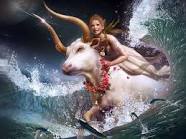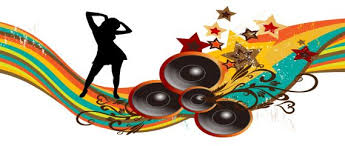Free Backgrounds Wallpaper Biography
A biography is a detailed description or account of someone's life. It entails more than basic facts (education, work, relationships, and death), a biography also portrays a subject's experience of these events. Unlike a profile or curriculum vitae (résumé), a biography presents a subject's life story, highlighting various aspects of his or her life, including intimate details of experience, and may include an analysis of a subject's personality.
Biographical works are usually non-fiction, but fiction can also be used to portray a person's life. One in-depth form of biographical coverage is called legacy writing. Biographical works in diverse media—from literature to film—form the genre known as a biography.
An authorized biography is written with the permission, cooperation, and, at times, participation of a subject or a subject's heirs. An autobiography is about a life of a subject, written by that subject or sometimes with a collaborator. [1]
A biography is a detailed description or account of someone's life. It entails more than basic facts (education, work, relationships, and death), a biography also portrays a subject's experience of these events. Unlike a profile or curriculum vitae (résumé), a biography presents a subject's life story, highlighting various aspects of his or her life, including intimate details of experience, and may include an analysis of a subject's personality.
Biographical works are usually non-fiction, but fiction can also be used to portray a person's life. One in-depth form of biographical coverage is called legacy writing. Biographical works in diverse media—from literature to film—form the genre known as a biography.
An authorized biography is written with the permission, cooperation, and, at times, participation of a subject or a subject's heirs. An autobiography is about a life of a subject, written by that subject or sometimes with a collaborator. [1]
The Early Middle Ages (AD 400 to 1450) saw a decline in awareness of the classical culture in Europe. During this time, the only repositories of knowledge and records of the early history in Europe were those of the Roman Catholic Church. Hermits, monks, and priests used this historic period to write the first modern biographies. Their subjects were usually restricted to the church fathers, martyrs, popes, and saints. Their works were meant to be inspirational to the people, vehicles for conversion to Christianity (see Hagiography). One significant secular example of a biography from this period is the life of Charlemagne by his courtier Einhard.
Meanwhile in the medieval Islamic civilization (c. AD 750 to 1258), biographies began to be produced on a large scale, noteably with the advent of paper and the beginning of the Prophetic biography tradition. This led to the introduction of a new literary genre: the biographical dictionary. The first biographical dictionaries were written in the Muslim world from the 9th century onwards. They contained more social data for a large segment of the population than that found in any other pre-industrial society. The earliest biographical dictionaries initially focused on the lives of the prophets of Islam and their companions, with one of these early examples being The Book of The Major Classes by Ibn Sa'd al-Baghdadi. And then began the documentation of the lives of many other historical figures (from rulers to scholars) who lived in the medieval Islamic world.[2]
By the late Middle Ages, biographies became less church-oriented in Europe as biographies of kings, knights, and tyrants began to appear. The most famous of such biographies was Le Morte d'Arthur by Sir Thomas Malory. The book was an account of the life of the fabled King Arthur and his Knights of the Round Table. Following Malory, the new emphasis on humanism during the Renaissance promoted a focus on secular subjects, such as artists and poets and encouraged writing in the vernacular. Giorgio Vasari's Lives of the Artists (1550) was the landmark biography focusing on secular lives. Vasari made celebrities of his subjects, as the Lives became an early "bestseller". Two other developments are noteworthy: the development of the printing press in the 15th century and the gradual increase in literacy. Biographies in the English language began appearing during the reign of Henry VIII. John Foxe's Acts and Monuments (1563), better known as Foxe's Book of Martyrs, was essentially the first dictionary of the biography in Europe, followed by Thomas Fuller's The History of the Worthies of England (1662), with a distinct focus on public life. Influential in shaping popular conceptions of pirates, A General History of the Pyrates (1724) is the prime source for the biographies of many well-known pirates.[3]
The romantic biographers disputed many of Johnson's judgments. Jean Jacques Rousseau's Confessions (1781–88) exploited the romantic point of view and the confessional mode. The tradition of testimony and confession was brought to the New World by the Puritan and Quaker memoirists and journal-keepers, where the form continued to be influential. Benjamin Franklin's autobiography (1791) would provide the archetype for the American success story. (Stone, 1982) Autobiography would remain an influential form of biographical writing.
Generally the American biography followed the English model, while incorporating Thomas Carlyle's view that a biography was a part of history. Carlyle asserted that the lives of great human beings were essential to understanding society and its institutions. While the historical impulse would remain a strong element in the early American biography, the American writers carved out their own distinct approach. What emerged was a rather didactic form of biography, which sought to shape the individual character of a reader in the process of defining national character. (Casper, 1999)
The distinction between the mass biography and the literary biography had formed by the middle of the nineteenth century, and reflected a breach between high culture and middle-class culture. This division would endure for the remainder of the century. Biography began to flower, thanks to new publishing technologies and an expanding reading public. This revolution in publishing made books available to a larger audience of readers. Almost ten times as many American biographies appeared from 1840 to 1860 than had appeared in the first two decades of the century. In addition, affordable paperback editions of popular biographies were published for the first time. Also, American periodicals began publishing a sequence of biographical sketches. (Casper, 1999) The topical emphasis shifted from republican heroes to self-made men and women.
Much of the late nineteenth-century biography remained formulaic. Notably, few autobiographies had been written in the nineteenth-century. The following century witnessed a renaissance of autobiography. Beginning with Booker T. Washington's Up From Slavery (1901) and followed by Henry Adams' Education (1907), the chronicle of self-defined failure that ran counter to the predominant American success story. The publication of socially significant autobiographies by both men and women began to flourish. (Stone, 1982)
The authority of psychology and sociology was ascendant, and would make its mark on the new century’s biographies. (Stone, 1982) The demise of the "great man" theory of history was indicative of the emerging mindset. Human behavior would be explained through Darwinian theories. "Sociological" biographies conceived of their subjects' actions as the result of the environment, and tended to downplay individuality. The development of psychoanalysis led to a more penetrating and comprehensive understanding of the biographical subject, and induced biographers to give more emphasis to childhood and adolescence. Clearly these psychological ideas were changing the way Americans read and wrote biographies, as a culture of autobiography developed in which the telling of one's own story became a form of therapy. (Casper, 1999)
The conventional concept of national heroes and narratives of success disappeared in the obsession with psychological explorations of personality. The new school of biography featured iconoclasts, scientific analysts, and fictional biographers. This wave included Lytton Strachey, Gamaliel Bradford, André Maurois, and Emil Ludwig, among others. Strachey's biographies had an influence similar to that which Samuel Johnson had enjoyed earlier. In the 1920s and '30s, biographical writers sought to capitalize on Strachey's popularity and imitate his style. Robert Graves (I, Claudius, 1934) stood out among those following Strachey's model of "debunking biographies." The trend in literary biography was accompanied in popular biography by a sort of "celebrity voyeurism", in the early decades of the century. This latter form's appeal to readers was based on curiosity more than morality or patriotism.
By World War I, cheap hard-cover reprints had become popular. The decades of the 1920s witnessed a biographical "boom." In 1929, nearly 700 biographies were published in the United States, and the first dictionary of American biography appeared. In the decade that followed, numerous biographies continued to be published, despite the economic depression. They reached a growing audience through inexpensive formats via public libraries.
The late feminist scholar Carolyn Heilbrun observed that women's biographies and autobiographies began to change character during the second wave of feminist activism. She cited Nancy Milford's 1970 biography Zelda, as the "beginning of a new period of women's biography, because "[only] in 1970 were we ready to read not that Zelda had destroyed Fitzgerald, but Fitzgerald her: he had usurped her narrative." Heilbrun named 1973 as the turning point in women's autobiography, with the publication of May Sarton's Journal of a Solitude, for that was the first instance where a woman told her life story, not as finding "beauty even in pain" and transforming "rage into spiritual acceptance," but acknowledging what had previously been forbidden to women: their pain, their rage, and their "open admission of the desire for power and control over one's life."[4]
















A biography is a detailed description or account of someone's life. It entails more than basic facts (education, work, relationships, and death), a biography also portrays a subject's experience of these events. Unlike a profile or curriculum vitae (résumé), a biography presents a subject's life story, highlighting various aspects of his or her life, including intimate details of experience, and may include an analysis of a subject's personality.
Biographical works are usually non-fiction, but fiction can also be used to portray a person's life. One in-depth form of biographical coverage is called legacy writing. Biographical works in diverse media—from literature to film—form the genre known as a biography.
An authorized biography is written with the permission, cooperation, and, at times, participation of a subject or a subject's heirs. An autobiography is about a life of a subject, written by that subject or sometimes with a collaborator. [1]
A biography is a detailed description or account of someone's life. It entails more than basic facts (education, work, relationships, and death), a biography also portrays a subject's experience of these events. Unlike a profile or curriculum vitae (résumé), a biography presents a subject's life story, highlighting various aspects of his or her life, including intimate details of experience, and may include an analysis of a subject's personality.
Biographical works are usually non-fiction, but fiction can also be used to portray a person's life. One in-depth form of biographical coverage is called legacy writing. Biographical works in diverse media—from literature to film—form the genre known as a biography.
An authorized biography is written with the permission, cooperation, and, at times, participation of a subject or a subject's heirs. An autobiography is about a life of a subject, written by that subject or sometimes with a collaborator. [1]
The Early Middle Ages (AD 400 to 1450) saw a decline in awareness of the classical culture in Europe. During this time, the only repositories of knowledge and records of the early history in Europe were those of the Roman Catholic Church. Hermits, monks, and priests used this historic period to write the first modern biographies. Their subjects were usually restricted to the church fathers, martyrs, popes, and saints. Their works were meant to be inspirational to the people, vehicles for conversion to Christianity (see Hagiography). One significant secular example of a biography from this period is the life of Charlemagne by his courtier Einhard.
Meanwhile in the medieval Islamic civilization (c. AD 750 to 1258), biographies began to be produced on a large scale, noteably with the advent of paper and the beginning of the Prophetic biography tradition. This led to the introduction of a new literary genre: the biographical dictionary. The first biographical dictionaries were written in the Muslim world from the 9th century onwards. They contained more social data for a large segment of the population than that found in any other pre-industrial society. The earliest biographical dictionaries initially focused on the lives of the prophets of Islam and their companions, with one of these early examples being The Book of The Major Classes by Ibn Sa'd al-Baghdadi. And then began the documentation of the lives of many other historical figures (from rulers to scholars) who lived in the medieval Islamic world.[2]
By the late Middle Ages, biographies became less church-oriented in Europe as biographies of kings, knights, and tyrants began to appear. The most famous of such biographies was Le Morte d'Arthur by Sir Thomas Malory. The book was an account of the life of the fabled King Arthur and his Knights of the Round Table. Following Malory, the new emphasis on humanism during the Renaissance promoted a focus on secular subjects, such as artists and poets and encouraged writing in the vernacular. Giorgio Vasari's Lives of the Artists (1550) was the landmark biography focusing on secular lives. Vasari made celebrities of his subjects, as the Lives became an early "bestseller". Two other developments are noteworthy: the development of the printing press in the 15th century and the gradual increase in literacy. Biographies in the English language began appearing during the reign of Henry VIII. John Foxe's Acts and Monuments (1563), better known as Foxe's Book of Martyrs, was essentially the first dictionary of the biography in Europe, followed by Thomas Fuller's The History of the Worthies of England (1662), with a distinct focus on public life. Influential in shaping popular conceptions of pirates, A General History of the Pyrates (1724) is the prime source for the biographies of many well-known pirates.[3]
The romantic biographers disputed many of Johnson's judgments. Jean Jacques Rousseau's Confessions (1781–88) exploited the romantic point of view and the confessional mode. The tradition of testimony and confession was brought to the New World by the Puritan and Quaker memoirists and journal-keepers, where the form continued to be influential. Benjamin Franklin's autobiography (1791) would provide the archetype for the American success story. (Stone, 1982) Autobiography would remain an influential form of biographical writing.
Generally the American biography followed the English model, while incorporating Thomas Carlyle's view that a biography was a part of history. Carlyle asserted that the lives of great human beings were essential to understanding society and its institutions. While the historical impulse would remain a strong element in the early American biography, the American writers carved out their own distinct approach. What emerged was a rather didactic form of biography, which sought to shape the individual character of a reader in the process of defining national character. (Casper, 1999)
The distinction between the mass biography and the literary biography had formed by the middle of the nineteenth century, and reflected a breach between high culture and middle-class culture. This division would endure for the remainder of the century. Biography began to flower, thanks to new publishing technologies and an expanding reading public. This revolution in publishing made books available to a larger audience of readers. Almost ten times as many American biographies appeared from 1840 to 1860 than had appeared in the first two decades of the century. In addition, affordable paperback editions of popular biographies were published for the first time. Also, American periodicals began publishing a sequence of biographical sketches. (Casper, 1999) The topical emphasis shifted from republican heroes to self-made men and women.
Much of the late nineteenth-century biography remained formulaic. Notably, few autobiographies had been written in the nineteenth-century. The following century witnessed a renaissance of autobiography. Beginning with Booker T. Washington's Up From Slavery (1901) and followed by Henry Adams' Education (1907), the chronicle of self-defined failure that ran counter to the predominant American success story. The publication of socially significant autobiographies by both men and women began to flourish. (Stone, 1982)
The authority of psychology and sociology was ascendant, and would make its mark on the new century’s biographies. (Stone, 1982) The demise of the "great man" theory of history was indicative of the emerging mindset. Human behavior would be explained through Darwinian theories. "Sociological" biographies conceived of their subjects' actions as the result of the environment, and tended to downplay individuality. The development of psychoanalysis led to a more penetrating and comprehensive understanding of the biographical subject, and induced biographers to give more emphasis to childhood and adolescence. Clearly these psychological ideas were changing the way Americans read and wrote biographies, as a culture of autobiography developed in which the telling of one's own story became a form of therapy. (Casper, 1999)
The conventional concept of national heroes and narratives of success disappeared in the obsession with psychological explorations of personality. The new school of biography featured iconoclasts, scientific analysts, and fictional biographers. This wave included Lytton Strachey, Gamaliel Bradford, André Maurois, and Emil Ludwig, among others. Strachey's biographies had an influence similar to that which Samuel Johnson had enjoyed earlier. In the 1920s and '30s, biographical writers sought to capitalize on Strachey's popularity and imitate his style. Robert Graves (I, Claudius, 1934) stood out among those following Strachey's model of "debunking biographies." The trend in literary biography was accompanied in popular biography by a sort of "celebrity voyeurism", in the early decades of the century. This latter form's appeal to readers was based on curiosity more than morality or patriotism.
By World War I, cheap hard-cover reprints had become popular. The decades of the 1920s witnessed a biographical "boom." In 1929, nearly 700 biographies were published in the United States, and the first dictionary of American biography appeared. In the decade that followed, numerous biographies continued to be published, despite the economic depression. They reached a growing audience through inexpensive formats via public libraries.
The late feminist scholar Carolyn Heilbrun observed that women's biographies and autobiographies began to change character during the second wave of feminist activism. She cited Nancy Milford's 1970 biography Zelda, as the "beginning of a new period of women's biography, because "[only] in 1970 were we ready to read not that Zelda had destroyed Fitzgerald, but Fitzgerald her: he had usurped her narrative." Heilbrun named 1973 as the turning point in women's autobiography, with the publication of May Sarton's Journal of a Solitude, for that was the first instance where a woman told her life story, not as finding "beauty even in pain" and transforming "rage into spiritual acceptance," but acknowledging what had previously been forbidden to women: their pain, their rage, and their "open admission of the desire for power and control over one's life."[4]
Free Backgrounds Wallpaper
Free Backgrounds Wallpaper
Free Backgrounds Wallpaper
Free Backgrounds Wallpaper
Free Backgrounds Wallpaper
Free Backgrounds Wallpaper
Free Backgrounds Wallpaper
Free Backgrounds Wallpaper
Free Backgrounds Wallpaper
Free Backgrounds Wallpaper
Free Backgrounds Wallpaper
Free Backgrounds Wallpaper
Free Backgrounds Wallpaper
Free Backgrounds Wallpaper
Free Backgrounds Wallpaper
Free Backgrounds Wallpaper
Free Backgrounds Wallpaper
FREE Graphics! (Intros, Logos, Backgrounds, Wallpapers, And MORE!!!)
Wallpaper 3D
3D WALLPAPER CREATOR
ThaJewishPanda - Ep. 1 Speed Art Desktop Background Wallpaper | Photo Manipulation Dance
No comments:
Post a Comment